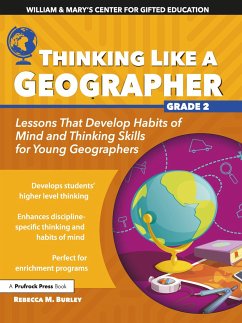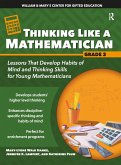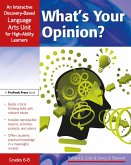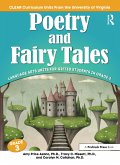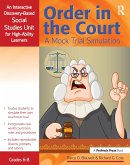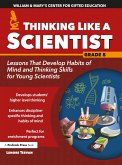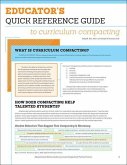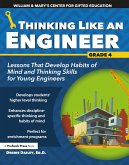Rebecca M Burley
Thinking Like a Geographer
Lessons That Develop Habits of Mind and Thinking Skills for Young Geographers in Grade 2
Rebecca M Burley
Thinking Like a Geographer
Lessons That Develop Habits of Mind and Thinking Skills for Young Geographers in Grade 2
- Broschiertes Buch
- Merkliste
- Auf die Merkliste
- Bewerten Bewerten
- Teilen
- Produkt teilen
- Produkterinnerung
- Produkterinnerung
Thinking Like a Geographer focuses on high-interest, career-related topics in the elementary curriculum related to geography.
Andere Kunden interessierten sich auch für
![Thinking Like a Mathematician Thinking Like a Mathematician]() Mary-Lyons Walk HanksThinking Like a Mathematician35,99 €
Mary-Lyons Walk HanksThinking Like a Mathematician35,99 €![What's Your Opinion? What's Your Opinion?]() Richard CoteWhat's Your Opinion?23,99 €
Richard CoteWhat's Your Opinion?23,99 €![Poetry and Fairy Tales Poetry and Fairy Tales]() Amy Price AzanoPoetry and Fairy Tales49,99 €
Amy Price AzanoPoetry and Fairy Tales49,99 €![Order in the Court Order in the Court]() Richard CoteOrder in the Court28,99 €
Richard CoteOrder in the Court28,99 €![Thinking Like a Scientist Thinking Like a Scientist]() Lenore TeevanThinking Like a Scientist48,99 €
Lenore TeevanThinking Like a Scientist48,99 €![Educator's Quick Reference Guide to Curriculum Compacting Educator's Quick Reference Guide to Curriculum Compacting]() Sally M ReisEducator's Quick Reference Guide to Curriculum Compacting16,99 €
Sally M ReisEducator's Quick Reference Guide to Curriculum Compacting16,99 €![Thinking Like an Engineer Thinking Like an Engineer]() Debbie DaileyThinking Like an Engineer44,99 €
Debbie DaileyThinking Like an Engineer44,99 €-
-
-
Thinking Like a Geographer focuses on high-interest, career-related topics in the elementary curriculum related to geography.
Hinweis: Dieser Artikel kann nur an eine deutsche Lieferadresse ausgeliefert werden.
Hinweis: Dieser Artikel kann nur an eine deutsche Lieferadresse ausgeliefert werden.
Produktdetails
- Produktdetails
- Verlag: Taylor & Francis
- Seitenzahl: 132
- Erscheinungstermin: 15. Januar 2019
- Englisch
- Abmessung: 274mm x 213mm x 10mm
- Gewicht: 318g
- ISBN-13: 9781618218223
- ISBN-10: 1618218220
- Artikelnr.: 52711740
- Herstellerkennzeichnung
- Libri GmbH
- Europaallee 1
- 36244 Bad Hersfeld
- gpsr@libri.de
- Verlag: Taylor & Francis
- Seitenzahl: 132
- Erscheinungstermin: 15. Januar 2019
- Englisch
- Abmessung: 274mm x 213mm x 10mm
- Gewicht: 318g
- ISBN-13: 9781618218223
- ISBN-10: 1618218220
- Artikelnr.: 52711740
- Herstellerkennzeichnung
- Libri GmbH
- Europaallee 1
- 36244 Bad Hersfeld
- gpsr@libri.de
The Center for Gifted Education at The College of William and Mary, a research and development center, was established in 1988 under the direction of Dr. Joyce VanTassel-Baska. The center provides services to educators, policy makers, graduate students, researchers, parents, and students in support of the needs of gifted and talented individuals. Located in Williamsburg, VA, the center has established a national reputation for excellence in research, curriculum development, and service. Several major grants, including funding from the Jacob K. Javits Gifted and Talented Students Education Act, have provided significant support for the work of the Center.
Introduction Unit 1: What Do Geographers Do? Lesson 1.1: What Is a
Geographer? Lesson 1.2: The Process of Geographic Inquiry Unit 2: What
Tools Do Geographers Use? Lesson 2.1: How Do Geographers Use Maps? Lesson
2.2: Explore Cartographic Skills Lesson 2.3: Communicate With Directions
Lesson 2.4: Create a Map of Your School or Community Unit 3: How Do People
Move? Lesson 3.1: Geographic Movement Lesson 3.2: Identify Traits of
Explorers Lesson 3.3: Explore Modes of Transportation Lesson 3.4: Research
Movement and Place Lesson 3.5: Write About Movement and Place Unit 4: What
Is a Region? Lesson 4.1: Region, Environment, and Change Lesson 4.2:
Explore the Concept of a Region Lesson 4.3: Categorize and Identify Regions
Lesson 4.4: Create a Museum Exhibit Unit 5: Where Do People Live? Lesson
5.1: Population and Diversity Lesson 5.2: Explore Your Community Lesson
5.3: Compare and Contrast Community Services Lesson 5.4: Plan a New
Community Unit 6: How Do Geographers Learn About People? Lesson 6.1: Use
Census Data to Understand Populations Lesson 6.2: Explore Characteristics
of Populations Lesson 6.3: Create a Population Pyramid Lesson 6.4: Promote
Services for a Population in Need Unit 7: How Do Countries Connect With
Each Other? Lesson 7.1: How Does Trade Work? Lesson 7.2: Explore Economic
Interdependence Lesson 7.3: Productions of Goods Around the Globe Lesson
7.4: Move Goods Around the Globe Final Project: You Can Be a Geographer
Reference About the Author
Geographer? Lesson 1.2: The Process of Geographic Inquiry Unit 2: What
Tools Do Geographers Use? Lesson 2.1: How Do Geographers Use Maps? Lesson
2.2: Explore Cartographic Skills Lesson 2.3: Communicate With Directions
Lesson 2.4: Create a Map of Your School or Community Unit 3: How Do People
Move? Lesson 3.1: Geographic Movement Lesson 3.2: Identify Traits of
Explorers Lesson 3.3: Explore Modes of Transportation Lesson 3.4: Research
Movement and Place Lesson 3.5: Write About Movement and Place Unit 4: What
Is a Region? Lesson 4.1: Region, Environment, and Change Lesson 4.2:
Explore the Concept of a Region Lesson 4.3: Categorize and Identify Regions
Lesson 4.4: Create a Museum Exhibit Unit 5: Where Do People Live? Lesson
5.1: Population and Diversity Lesson 5.2: Explore Your Community Lesson
5.3: Compare and Contrast Community Services Lesson 5.4: Plan a New
Community Unit 6: How Do Geographers Learn About People? Lesson 6.1: Use
Census Data to Understand Populations Lesson 6.2: Explore Characteristics
of Populations Lesson 6.3: Create a Population Pyramid Lesson 6.4: Promote
Services for a Population in Need Unit 7: How Do Countries Connect With
Each Other? Lesson 7.1: How Does Trade Work? Lesson 7.2: Explore Economic
Interdependence Lesson 7.3: Productions of Goods Around the Globe Lesson
7.4: Move Goods Around the Globe Final Project: You Can Be a Geographer
Reference About the Author
Introduction Unit 1: What Do Geographers Do? Lesson 1.1: What Is a
Geographer? Lesson 1.2: The Process of Geographic Inquiry Unit 2: What
Tools Do Geographers Use? Lesson 2.1: How Do Geographers Use Maps? Lesson
2.2: Explore Cartographic Skills Lesson 2.3: Communicate With Directions
Lesson 2.4: Create a Map of Your School or Community Unit 3: How Do People
Move? Lesson 3.1: Geographic Movement Lesson 3.2: Identify Traits of
Explorers Lesson 3.3: Explore Modes of Transportation Lesson 3.4: Research
Movement and Place Lesson 3.5: Write About Movement and Place Unit 4: What
Is a Region? Lesson 4.1: Region, Environment, and Change Lesson 4.2:
Explore the Concept of a Region Lesson 4.3: Categorize and Identify Regions
Lesson 4.4: Create a Museum Exhibit Unit 5: Where Do People Live? Lesson
5.1: Population and Diversity Lesson 5.2: Explore Your Community Lesson
5.3: Compare and Contrast Community Services Lesson 5.4: Plan a New
Community Unit 6: How Do Geographers Learn About People? Lesson 6.1: Use
Census Data to Understand Populations Lesson 6.2: Explore Characteristics
of Populations Lesson 6.3: Create a Population Pyramid Lesson 6.4: Promote
Services for a Population in Need Unit 7: How Do Countries Connect With
Each Other? Lesson 7.1: How Does Trade Work? Lesson 7.2: Explore Economic
Interdependence Lesson 7.3: Productions of Goods Around the Globe Lesson
7.4: Move Goods Around the Globe Final Project: You Can Be a Geographer
Reference About the Author
Geographer? Lesson 1.2: The Process of Geographic Inquiry Unit 2: What
Tools Do Geographers Use? Lesson 2.1: How Do Geographers Use Maps? Lesson
2.2: Explore Cartographic Skills Lesson 2.3: Communicate With Directions
Lesson 2.4: Create a Map of Your School or Community Unit 3: How Do People
Move? Lesson 3.1: Geographic Movement Lesson 3.2: Identify Traits of
Explorers Lesson 3.3: Explore Modes of Transportation Lesson 3.4: Research
Movement and Place Lesson 3.5: Write About Movement and Place Unit 4: What
Is a Region? Lesson 4.1: Region, Environment, and Change Lesson 4.2:
Explore the Concept of a Region Lesson 4.3: Categorize and Identify Regions
Lesson 4.4: Create a Museum Exhibit Unit 5: Where Do People Live? Lesson
5.1: Population and Diversity Lesson 5.2: Explore Your Community Lesson
5.3: Compare and Contrast Community Services Lesson 5.4: Plan a New
Community Unit 6: How Do Geographers Learn About People? Lesson 6.1: Use
Census Data to Understand Populations Lesson 6.2: Explore Characteristics
of Populations Lesson 6.3: Create a Population Pyramid Lesson 6.4: Promote
Services for a Population in Need Unit 7: How Do Countries Connect With
Each Other? Lesson 7.1: How Does Trade Work? Lesson 7.2: Explore Economic
Interdependence Lesson 7.3: Productions of Goods Around the Globe Lesson
7.4: Move Goods Around the Globe Final Project: You Can Be a Geographer
Reference About the Author

